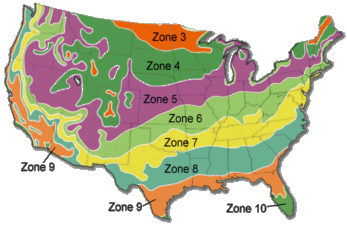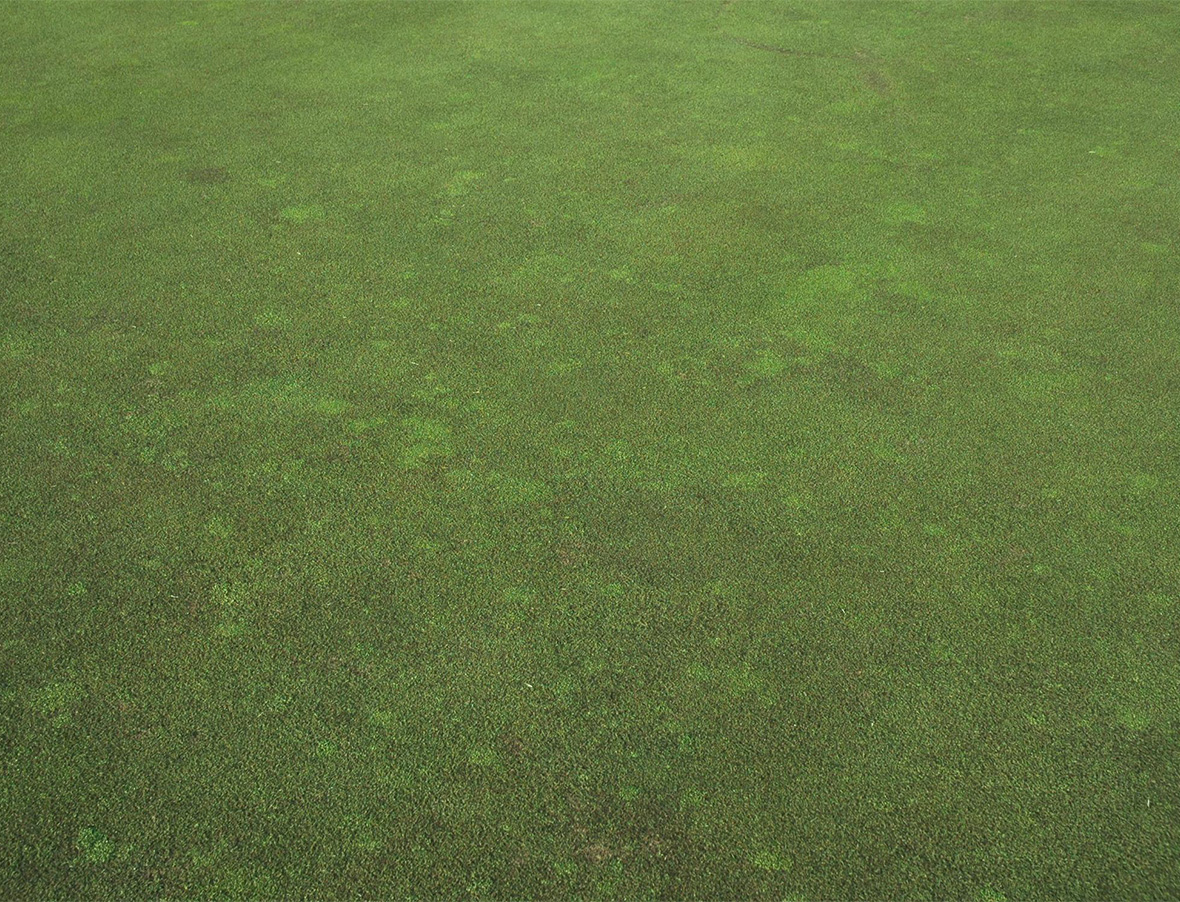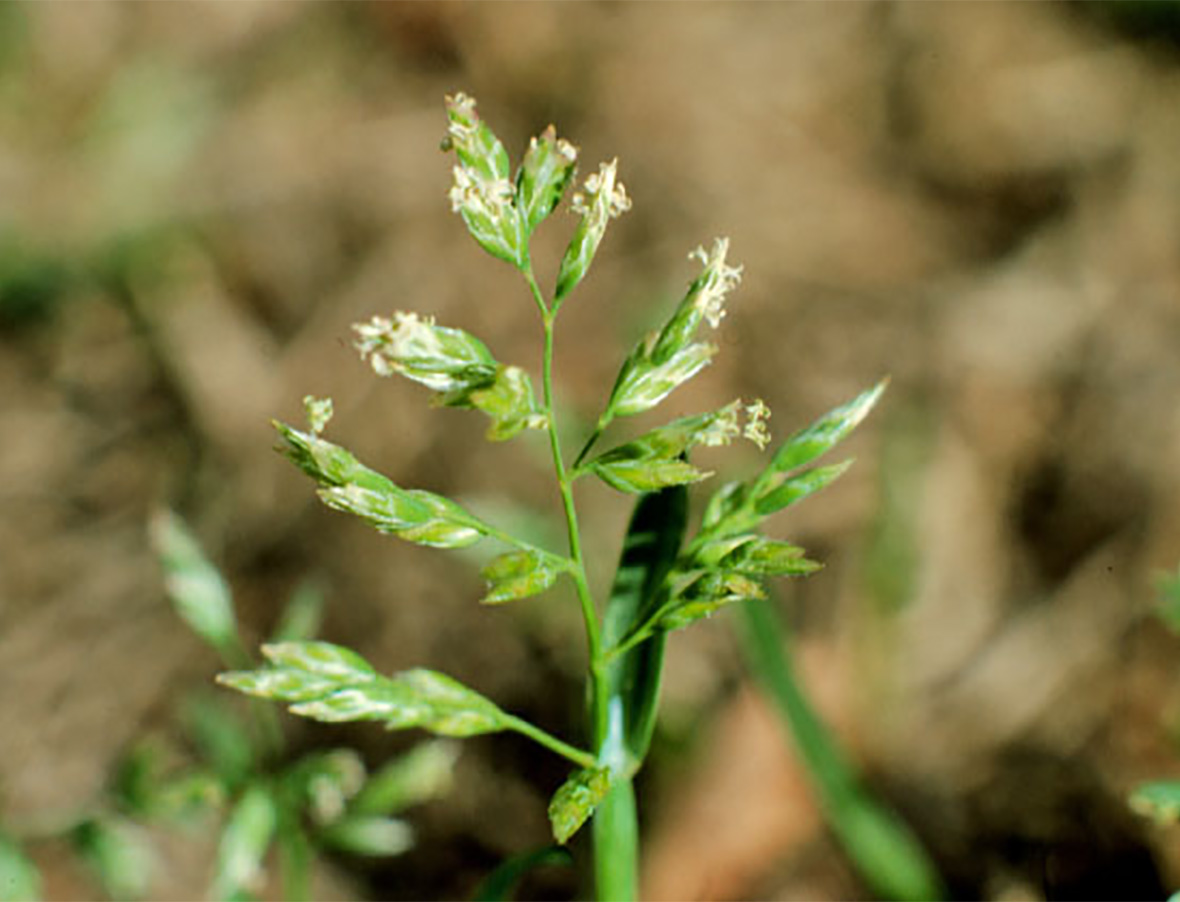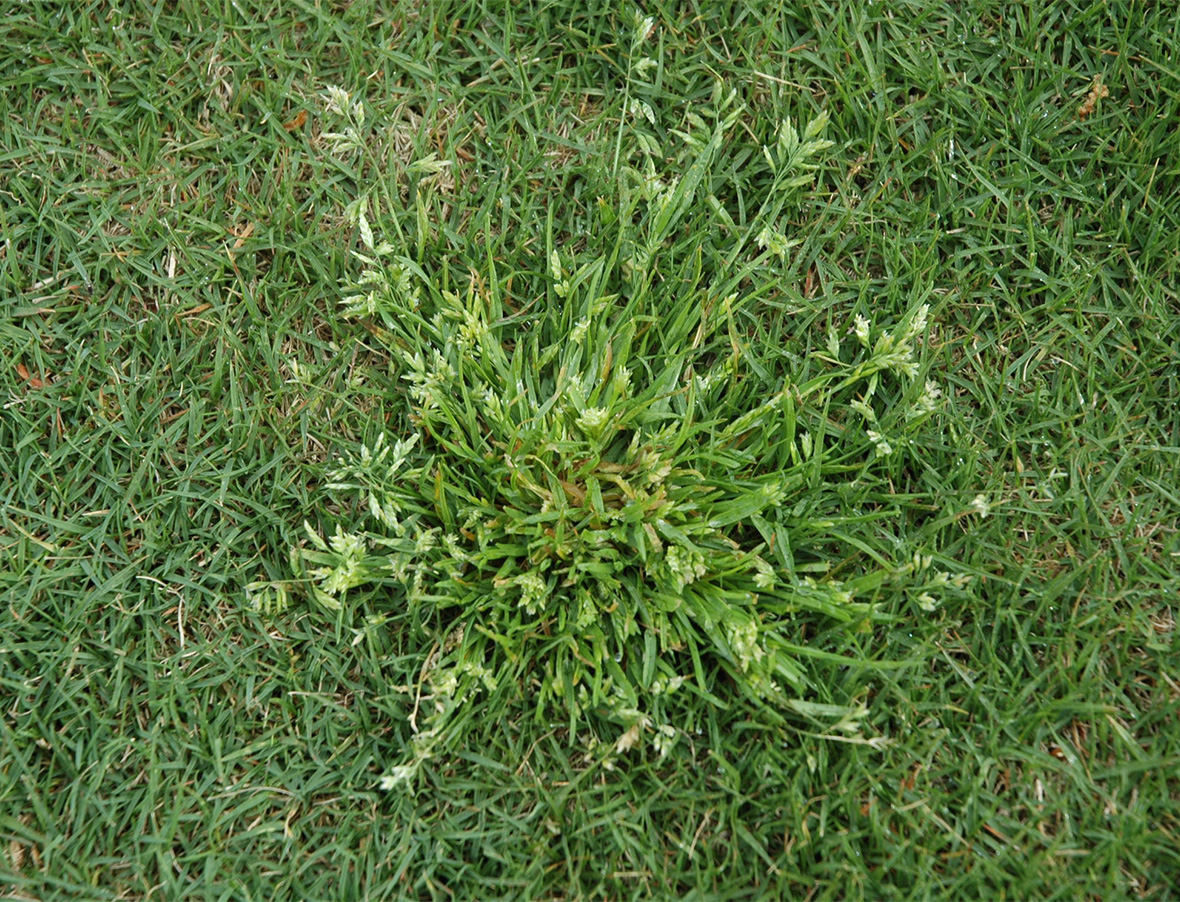Annual Bluegrass
Scientific Name: Poa annua
Also Known As: Annual meadowgrass, poa, poanna, wintergrass, walkgrass
Weed Family: Poaceae
Description
Small tufted to clumped, yellow-green winter annual. Leaf blade smooth on both surfaces, with two distinct, clear lines, one on each side of the midrib, blades often wrinkled (wavy). Folded vernation. Leaf tip keeled or long, slightly pointed. Sheath smooth, compressed, and keeled. Light green to whitish spikelets that lack cottony hairs, are arranged on branches, one to two per node, in dense to open flower clusters. Fruits throughout life cycle with majority of seedheads formed during spring. Perennial biotypes (P.annua var. reptans (Hauskins) Timm.) occur in moist, closely mowed areas, such as golf course greens. Compared to annual bluegrass, the perennial biotypes generally are darker colored, more prostrate growing, produce few seedheads, and often form patches from short stolens.Weed Photos: Courtesy of Dr. Lambert McCarty. Clemson University. Clemson, SC.
Herbicide Use
Preemergence control includes members of the dinitroaniline herbicide family and other preemerence products (e.g. benefin, dithiopyr, fenarimol, napropamide, oryzalin, oxadiazon, pendimethalin, and prodiamine). Apply in late summer when air temperatures reach 75°F (24°C) for several consecutive days. Early prostemergence control includes atrazine/simazine/metribuzin, clethodim, diquat, ethofumesate, and pronamide and rimsulfuron. Midseason postemergence control includes flazasulfuron, foramsulfron, gylphosate, rimsulfuron, and triflozysulfuron. Late-season postemergence control in ryegrass and bentgrass include bispyribac-sodium. Selective suppression is provided by plant growth regulators, such as paclobutrazol (Trimmit), flurprimidol (Cutless), and mefluidide Embark). Check the herbicide label for specific application rates and turfgrass tolerance before use. Distribution
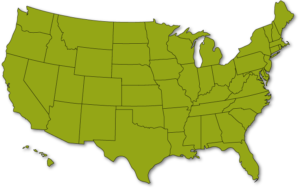
Germination Dates
